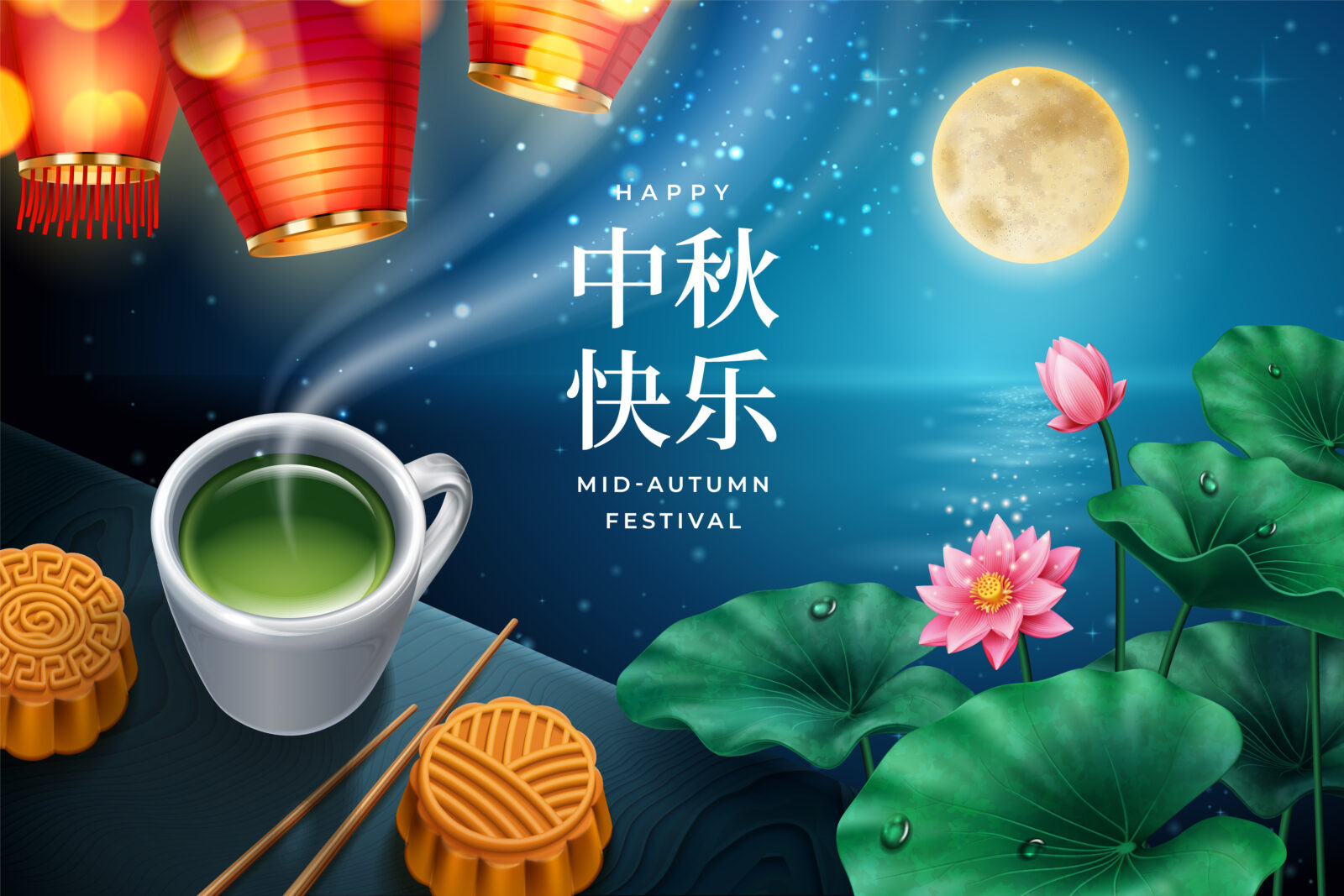Harvest Moon 2025: Teas to sip under October’s full moon
This Monday mark’s 2025’s full moon, called both the hunters moon and the harvest moon. For countries like China and Japan that follow lunar calendars, this moon is somewhat unusual.
Lunar calendars begin each month with the new moon, when the moon is not visible. Fifteen days later, with a wee bit of wiggle room, it’s always the full moon. In many countries that honor lunar calendars, the 15th day of the 8th lunar month normally falls in September, which is when the Chinese hold the Mid-Autumn Festival and the Japanese participate in Tsukimi, both of which revolve around the full moon
But this year, that date is October 6—the full moon on Monday. It’s time to revel in some moon-viewing holiday traditions! And at the very least, let’s honor this important moon with lots of beautiful tea!
For countries that celebrate this moon, the symbolism marinates in aspects of a full moon, including wholeness, harmony and family unity. In addition, as harvests have been vital for nearly all human civilizations for millennia, the moon associated with the season’s final—and often, largest—harvest ranks as a special full moon indeed.
Different Takes on Honoring the Harvest Moon
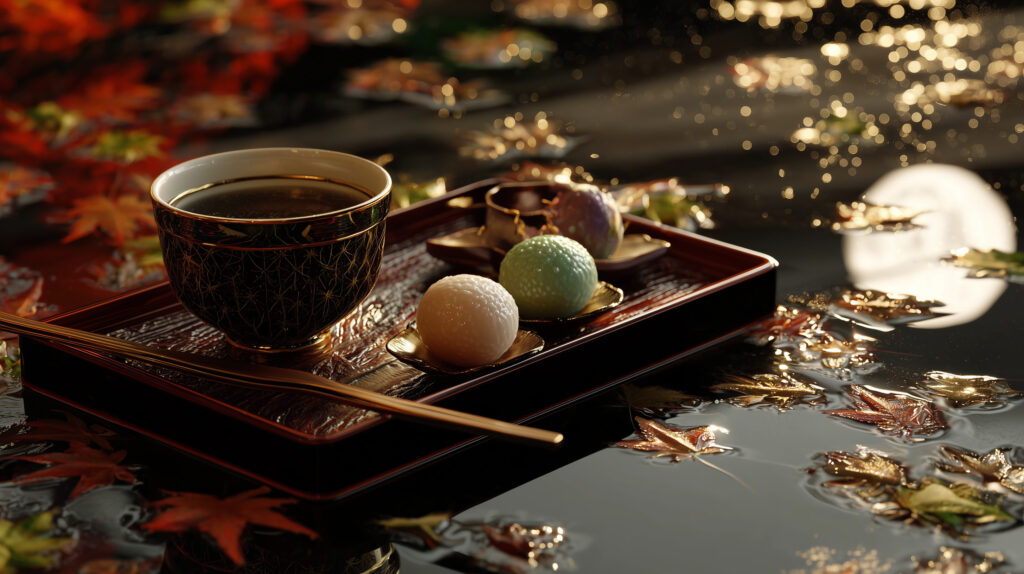
Tsukimi
Tsukimi, which means “moon-viewing” in Japanese, includes traditions that hinge on seasonal aesthetics, poetry and offerings. Pursuits include:
Foods
- Tsukimi dango—small, round rice dumplings arranged in a pyramid to honor the moon
- Seasonal foods—chestnuts, taro, persimmons, sake
- Eggs—their round shape echoes the moon
- Restaurants—recently, fast-food chains and izakaya bars run “tsukimi specials,” with dishes like egg-topped burgers or noodles
Decorations
People place pampas grass in vases, to attract good harvests and ward off evil
- People place pampas grass in vases, to attract good harvests and ward off evil
Activities
- Families and other groups, like members of temples or tea houses, gather and admire the full moon together. They often recite poetry and host outdoor tea ceremonies
Mid-Autumn Festival
China’s Mid-Autumn Festival often involves family reunions and lantern festivals. Pursuits include:
Food
- Mooncakes—bakers fill these pastries with lotus seed paste, red bean and other flavors, often with salted egg yolks.
- Pomelo fruit often gets featured—its name in Chinese sounds like the word “blessing.” In addition, in China moon celebrants often honor seasonal produce.
Decorations
- Lanterns! In China people mark the holiday with colorful paper lanterns. In some communities, elaborate lantern displays and dragon/lion dances can take place.
Activities
- Moon worship—people in some regions of the country erected altars outside, and make offerings to the moon goddess, Chang’e.
Customs differ between countries. But one thing remains constant—they all pair their moon celebrations with tea. So do we. And you should consider it too! We love how tea figures so prominently in celebrations and ceremonies across Asia. Few other regions find such deep cultural roots in one beverage.
Happy Harvest Moon!
Harvest Moon Teas: Silver Needle White
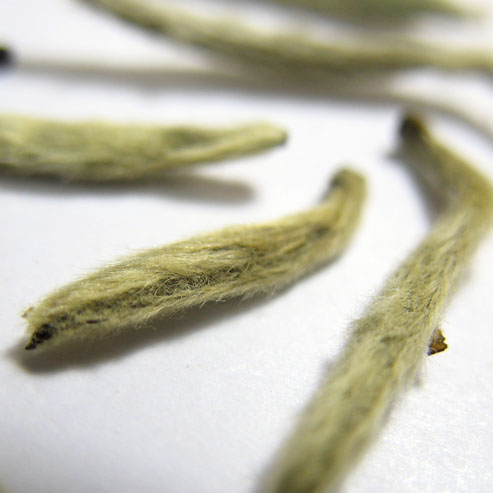
What a perfect tea for honoring October’s harvest moon. The buds themselves look like moonlight—pale, silvery and shimmering. When brewed, the liquor gives off gold hints—kind of like certain kinds of full moons. In addition, people in China have long heralded Silver Needle for its purity and elegance—qualities that align crisply with full moons. Finally, the delicate, sweet flavor with slight melon notes works well with traditional harvest moon foods, like mooncakes in China or tsukimi dango in Japan.
White teas also often get associated with yin energy, characterized by cool, reflective and subtle qualities—classic moon vibes!
Our Silver Needle white, also known as Bai HaoYin Zhen), is made only from tea buds picked in early spring. The buds then get fanned out and dried in the sun, before artisans fire them over low-heat burning charcoal. The process preserves the leaves gorgeous color, while also drying the tea and arresting oxidation.
This is quite a sweet white tea (only in flavor—it contains no sugars), which will coat your mouth with a clean, smooth feeling.
Harvest Moon Teas: Chrysanthemum Green
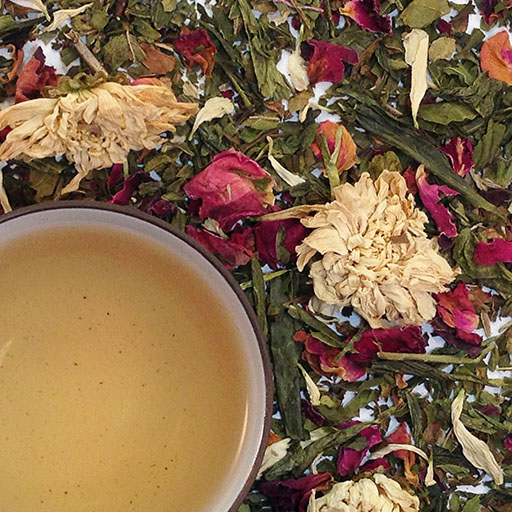
As the harvest moon celebration takes place in the heart of autumn, we love pairing the observance with teas containing the season’s signature bloom—chrysanthemums. Not only does the flower signify fall, it also serves as a traditional tea ingredient in many Chinese blends, as well as being crafted simply by brewing chrysanthemum with hot water.
Our Chrysanthemum Green tea rests on a foundation of Japanese sencha tea, which people across the island nation frequently drink while participating in tsukimi.
With peppermint and rose petal too, this favorite blend stands as an ideal accompaniment to any harvest moon observances. It’s also delicious and healthy. Chrysanthemum is known for its many health benefits, ranging from lung health to mitigating inflammation.
Harvest Moon Teas: White Crescent Raw Puerh
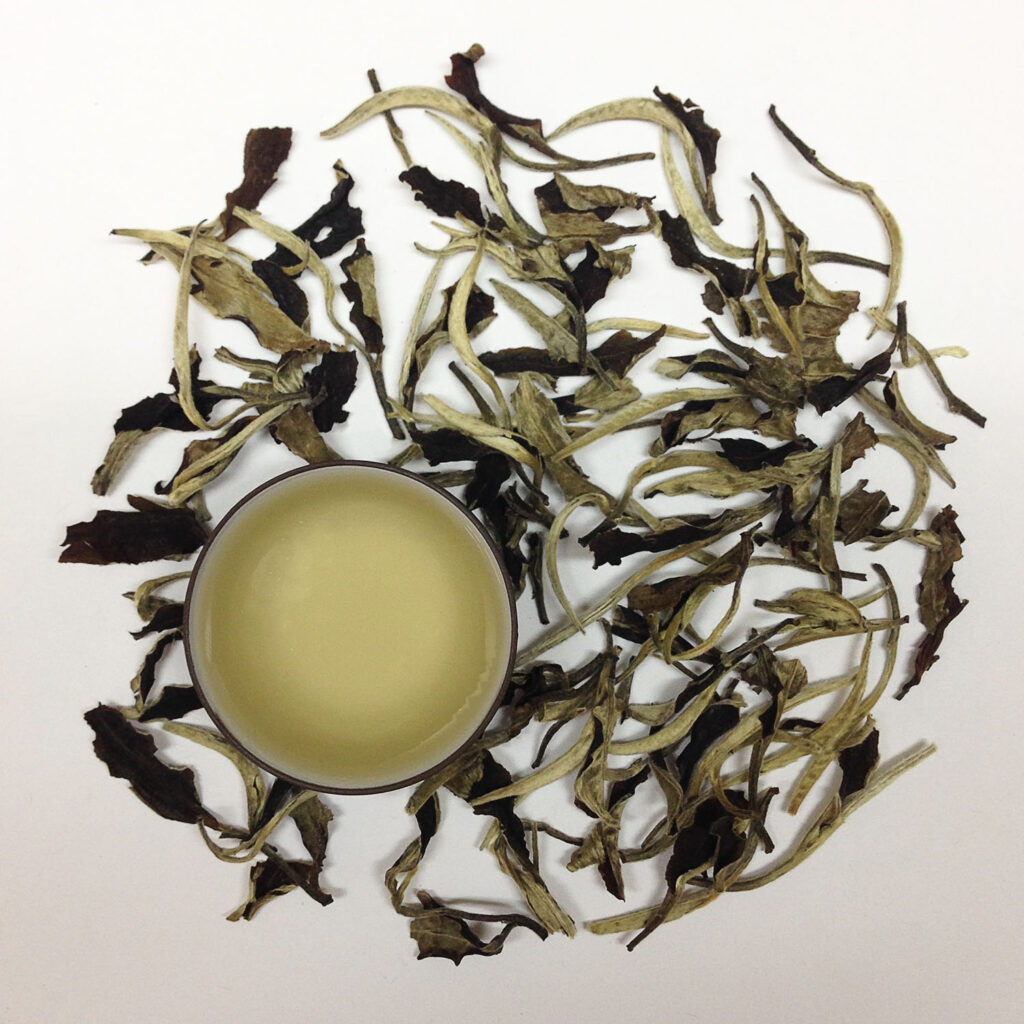
How could we resist a tea with a moon reference in its name? True, this tea from Yunnan Province touches upon a crescent, rather than a full, moon. But we love how its tender, young leaves remind people of moonlight. More importantly, however, is people across China drink a good bit of pu-erh during the festival. The earthy tea cuts through the mooncakes that get scarfed down in abundance during the Mid-Autumn Festival—especially traditional Cantonese mooncakes with lotus seed paste and salted duck-egg yolks, that are rich and fatty.
Finally, pu-erh famously aids digestion. As the only fermented tea, it offers probiotic and other digestion advantages.
It’s a standard moon-viewing tea option in China—and thanks to our White Crescent and the rest of our pu-erh offerings, it can accompany your Sunday night tea observances as well.

